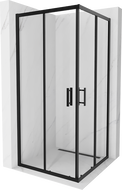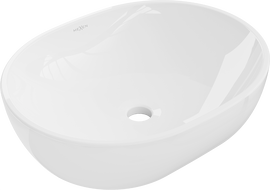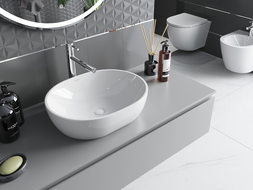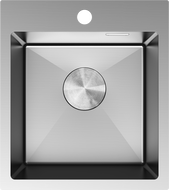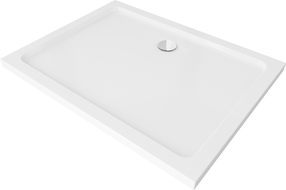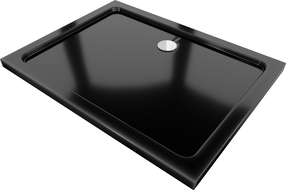
Until recently, everything was functioning perfectly. Nothing was getting clogged. Water was draining smoothly into the drain. Then suddenly... disaster! The siphon is not functioning, and used water spills from the cabin, or worse, escapes from under the shower base. It has already flooded the bathroom, and a stain has appeared on the ceiling of the neighbor below. We need to quickly find the cause of the failure and take action. It will probably be necessary to replace the siphon. How to do it? We have some tips.
If Water in the Shower Base is Not Draining...
If water from the shower cabin is not draining properly and spills onto the bathroom floor, you don’t need to immediately start disassembling the shower base. It may turn out that replacing the siphon is not necessary. Perhaps there has only been a decline in the drainage gradient, and in the worst case, a total blockage of the drain. We can handle such an inconvenience without any problems. It’s enough to just clean the drain and you’re done. You can try to do this in several ways:
- by removing the debris basket (if the siphon is equipped with one) and removing dirt,
- cleaning the plumbing pipes using a drain cleaning spiral introduced from above,
- flushing the siphon with a strong stream of water introduced directly into the drain using a shower hose after unscrewing the head,
- performing siphon cleaning using special detergents.
It’s Wet Under the Shower Base. What’s Happening?
The most common reason for water escaping from under the shower base is improper installation of the siphon. This creates a leak between the siphon and the drain. When the siphon housing does not fit well against the shower base, all the water does not reach the flexible pipe that could drain into the sewer (part of it escapes outside). There should be a rubber gasket at the connection point to prevent leaking. However, it is susceptible to fairly quick wear. Prolonged contact with water, the action of chemicals, and temperature changes can lead to the gasket being destroyed. Replacing the damaged gasket with a new one does not require special skills or tools and effectively resolves the issue.
Other Causes of Siphon Leaks
If the water drain from the shower base is to be effective, one should also ensure the precise installation of the siphon. All components should be well fitted and tightly screwed, and gaskets should adhere closely to the surfaces. It’s also worth investing in a siphon made of high-quality material. Too thin plastic is prone to mechanical damage and can easily be punctured during cleaning. When purchasing a siphon, carefully check what the product looks like, whether there are any construction defects, such as unevenness or a crooked thread. The silicone used for installing the siphon and shower base also plays an important role. For the bathroom, we choose sanitary silicone. It is resistant not only to high temperatures and humidity but also to mold and bacteria.
What to Do When the Shower Base Needs a Siphon Replacement?
Depending on the type of drain previously installed, it is not always necessary to disassemble the entire cabin and shower base. In some cases, this can be avoided. It’s enough to just remove the cover panel that conceals the siphon and drain installation elements. Unfortunately, in most bathrooms, we have to reckon with the fact that in order to install a new siphon, it will be necessary to disassemble the shower base. Moreover, prolonged accumulation of water under the shower base can lead to moldy walls. Therefore, the shower base should be lifted, the water and any debris from the floor should be collected, the walls should be dried, and the old silicone removed. Only then can you proceed with installing the new siphon and connecting it to the sewer.
Instructions for Replacing the Siphon in a Shower Base
As mentioned earlier, installing a new siphon in the shower base requires removing the old device. Once you have dealt with that, you can proceed with the installation of the drain:
- place a gasket on the lower body of the siphon,
- position the body under the shower base so that it fits tightly against the drain hole,
- from above, insert the threaded collar with the gasket into the shower base hole,
- carefully screw both elements together,
- connect the siphon to the sewer installation using a pipe with a diameter of 40 mm or 50 mm,
- install a strainer, sieve, or click-clack plug in the siphon (depending on the purchased model),
- attach the siphon cover,
- check the tightness of the connections by letting water flow through the siphon into the sewer,
- reinstall the shower base and shower cabin,
- ensure proper sealing.

